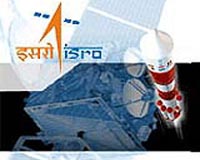 |
London, UK (SPX) Jul 26, 2010 The UK Space Agency has announced a one year pilot programme to design and launch a CubeSat - a miniature, cube-shaped satellite that will allow the UK to test new space technologies and carry out new space research 'cheaply' and quickly. The pilot programme, named UKube-1, will use the Clyde Space CubeSat platform and will involve a competition amongst companies and academic groups to come up with the most innovative ideas for payloads. UKube-1 will be launched on the satellite in mid 2011. Speaking at the Farnborough International Airshow, the Minister for Universities and Science David Willetts, said, "Britain's first CubeSat will bring major benefits to the UK space industry. Firms will now have a cheap and quick way to test their latest prototypes. Running a competition to see which experiments will go up with UKube1 is an inventive way to ensure it is fitted with the most creative and innovative payload ideas." Dr David Williams, Chief executive (Acting) of the UK Space Agency, added, "A CubeSat programme will allow us to fast-track and test some of the UK's new and cutting-edge space technology and perform unique science at a relatively low cost. These satellites may be smaller than your home computer, but, with the payloads that our skilled scientists will add to them, they are sure to make up in innovation what they lack in size." Craig Clark, CEO of Clyde Space, said, "The launch of the Cubesat Challenge programme is a tremendous opportunity for us. As with all space related business, the best way to market space products is through their successful demonstration in orbit. By providing the Cubesat platform, we will benefit immensely from the opportunity and so it is vital to the growth of Clyde Space as a leading CubeSat company. I feel also that this programme is vital for the UK's commercial exploitation and export of CubeSat technology in this rapidly growing market." EADS Astrium, Europe's largest space company, is also a key supporter of the CubeSat concept. Over the past three years Astrium has led the definition of a national CubeSat programme with numerous partners from academia and industry. "CubeSats provide a 'playground for innovation' by enabling us to test new technology that simply could not be tried on major risk-adverse missions. The concept also ensures that we can develop the next generation of space professionals, both in engineering and science, by giving them the ideal skill set to succeed in the industry", stated Dr Ronan Wall, Space Systems Engineer, Astrium. The small size, low complexity and largely off-the-shelf nature of Cubesats make them both inexpensive and allow them to be launched on a rapid timescale, enabling a high number of launches, more science and more applications. A number of current CubeSat missions, operated by other countries, are targeted at science applications and especially at studies that can be carried out at low-Earth orbits such as space weather studies, atmospheric science, energetic particle studies and spacecraft damage studies. Examples include NASA's Firefly mission which is studying the relationship between lightning and mysterious bright flashes of gamma radiation in the upper atmosphere of our planet. The low-Earth orbit of CubeSats is also ideal for disaster monitoring and Earth sciences, as the lower a satellite orbits, the less time it takes to complete a revolution of the Earth. Constellations of Earth-monitoring CubeSats could be set up far more cheaply than regular satellite constellations and could be used for all kinds of applications, including bush-fire early warning, live maps and Tsunami warning.
Share This Article With Planet Earth
Related Links Clyde Space Space Technology News - Applications and Research
 ISRO Training Next Generation Of Stargazers
ISRO Training Next Generation Of StargazersBangalore, India (PTI) Jul 23, 2010 Catch them young is the latest mantra adopted by Indian Space Research Organisation (ISRO) to provide hands-on experience to aspiring young space scientists in the highly sophisticated field of space research. Fresh from successfully launching India's first pico-satellite StudSat (student satellite), built by a group of 40 young engineering students from Bangalore and Hyderabad recently, I ... read more |
|
| The content herein, unless otherwise known to be public domain, are Copyright 1995-2010 - SpaceDaily. AFP and UPI Wire Stories are copyright Agence France-Presse and United Press International. ESA Portal Reports are copyright European Space Agency. All NASA sourced material is public domain. Additional copyrights may apply in whole or part to other bona fide parties. Advertising does not imply endorsement,agreement or approval of any opinions, statements or information provided by SpaceDaily on any Web page published or hosted by SpaceDaily. Privacy Statement |